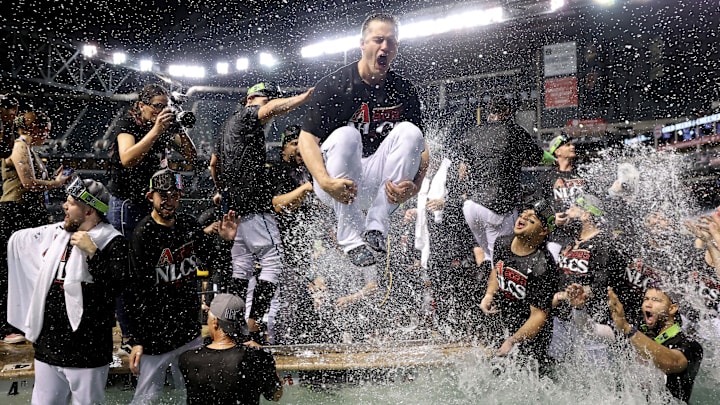On Aug. 12, 2023, the Diamondbacks lost a 10-5 slugfest to the San Diego Padres, losing their ninth straight game. They were 57-59, two games below .500 for the first time all season.
This stretch marked the first time they had been below .500 at all since game since April 6, the seventh game of the season.
At that point, it was difficult to find anyone who had faith that this team, who had led the division mere weeks prior, could make a deep playoff run. Even finishing the season in the playoffs, but on a 4-game losing streak and a weak offensive showing looked like a bad omen for October.
But here they are. Here are some takeaways from another near-flawless round of Diamondbacks playoff baseball:
Takeaway 1: The Diamondbacks can beat you in many ways
The D-backs have had a reputation as of late, even fueling their playoff slogan, "Embrace the Chaos." But the Diamondbacks have shown in the NLDS, and in the entire postseason so far, that they don't just live and die by one brand of baseball.
In the Wild Card round, they scored "Chaos" runs, put on defensive clinics, and attacked Milwaukee's bullpen. Although a surprising upset, they played the way many expected them to: squeaking out runs, coming back from deficits, and winning wild games in later innings.
The NLDS showed that they can adapt to whoever their opponent is, and they don't have to rely on outsmarting or out-scrapping their opponents. From game 1 of the NLDS, the team showed that they can out-slug even the mighty Dodgers, and they can play with a lead, too.
The D-backs hit nine home runs in the series against LA, a number one might expect from the Braves or Phillies. They lead the postseason in home runs, with 13 over the last five games, including an MLB-record four in one inning of game three against Dodgers starter Lance Lynn.
Gabriel Moreno hit what appeared to be a home run, but it was called foul, only for him to send one out on the very next pitch.
Gabriel Moreno made sure his next swing was VERY fair! #Postseason pic.twitter.com/nBX1RYx6wb
— MLB (@MLB) October 12, 2023
And they didn't wait to get started, either. The D-backs ambushed Dodgers starters early in games. After chasing Dodgers ace Clayton Kershaw after just one out, tallying six runs, they proceeded to similarly attack the others.
Lance Lynn held the longest start of any Dodger starter in the series, going 2.2 innings, however, Dodger starters went a collective 4.2 innings, allowing 16 hits and 13 earned runs.
The D-backs took hold of Kershaw's blowup start to show they aren't just squeaking by, they can, in fact, produce blowouts. They kept their feet on the gas, ending the game with 13 hits and an 11-2 final score.
But the tone shifted in later games. Although they still dominated Dodger starters, they showed they can also put up smaller leads and still hang with the best. D-backs starters delivered consistently, allowing just two collective runs over three starts.
The D-backs showed they aren't a one-dimensional team. They will beat you however they need to.
